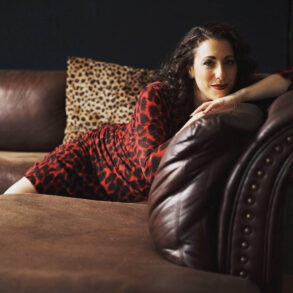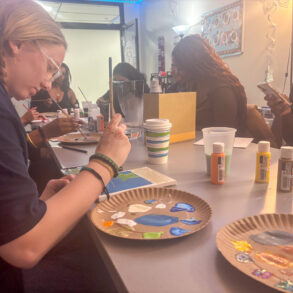When Natasha Walsh was in art school in Sydney in her late teens and early 20s, she was shocked to see scenes of female abuse casually depicted in the work of major classical artists, from Rembrandt to Botticelli.
Warning: This article discusses sexual assault.
“[There were these] different classical stories of rape that were re-imagined again and again by artists for centuries,” says Walsh.
And then there’s the accounts of female sitters.
“We know stories of how artists treated their subjects, for example [Pablo] Picasso, putting out a cigarette butt on his lover’s face. It was one of his famous models, Françoise [Gilot],” says Walsh.
But this isn’t just the stuff of art history.
Walsh came face to face with this behaviour while on an artist’s residency in Paris in 2019.
“On three occasions, I was invited to some male artist’s studio and was assaulted. And so I remember feeling very angry at the time,” she says.
“I came as an artist, as an equal, and [then I was made] to feel like there was an alternative reason for my being invited to their spaces, to discuss what I thought was the art.”
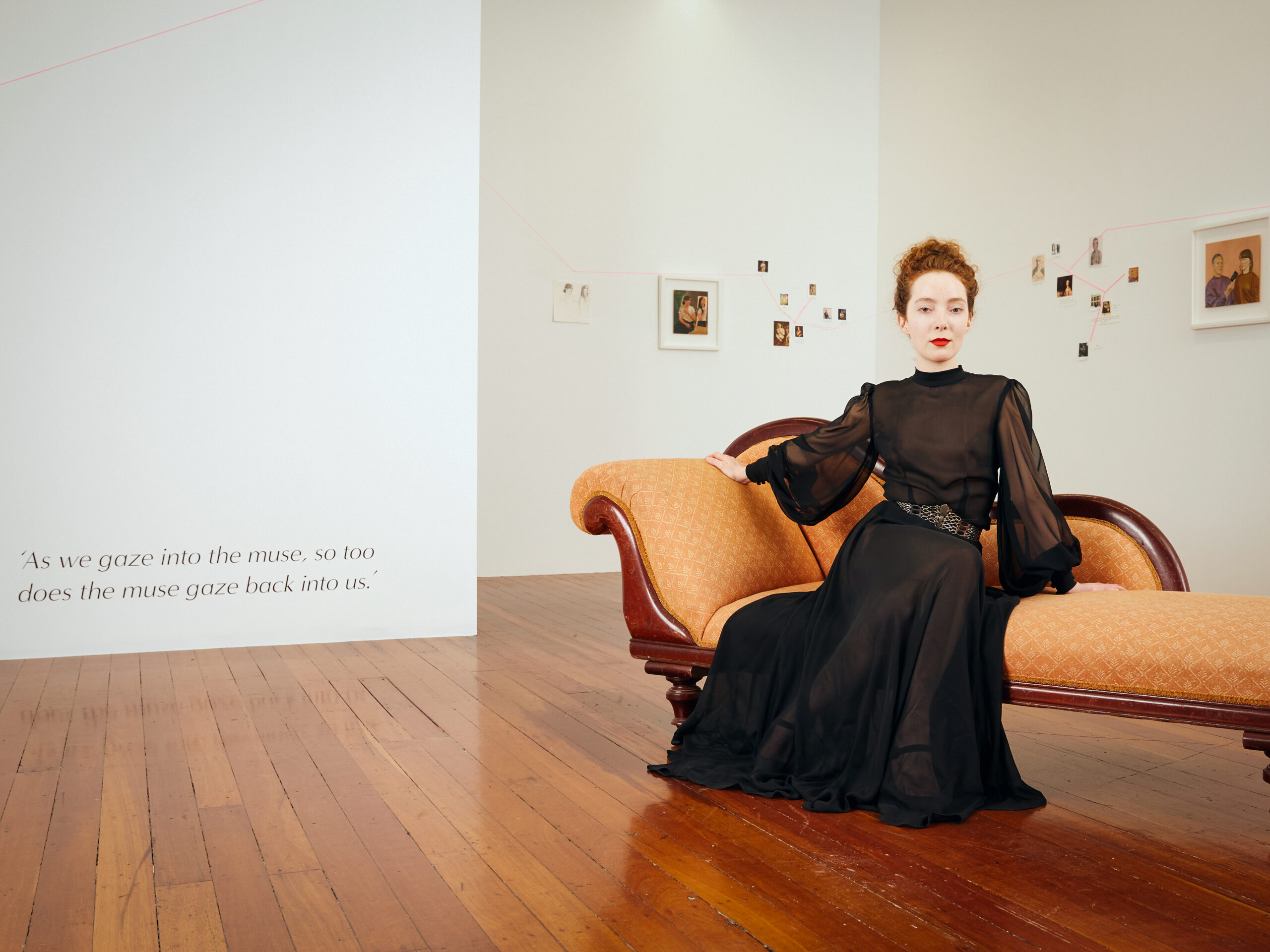
She came back to Sydney with an idea for a new project.
“I wanted to have a conversation about how art history is littered with stories where the female perspective doesn’t even come into it, and it’s not important, she’s just a vessel for the artist. I wanted to give her a voice,” she says.
The first painting she did was a self-portrait, re-working Gustav Klimt’s 1907 painting Danaë, which depicted a mythological story of rape.
“Klimt, like many artists before, transformed this ancient tale of rape into an erotic symbol of divine love and inspiration. Naturally,” Walsh writes in her artist’s statement for last’s years The National survey of contemporary Australian art.
Walsh’s version transforms the nude at the centre from eyes closed and passive to actively locking eyes with the viewer, and free from the impregnating shower of “golden rain” from the original painting.
This was the birth of her ongoing Hysteria project, a series that re-works pivotal paintings from art history, to centre their multifaceted female subjects.
“I myself felt the dreaded pangs of hysteria when I first encountered Klimt’s painting Danaë,” writes Walsh.
“Hysteria was the name of a curious illness, persisting from ancient times until 1980, thought only to affect those with a uterus … the symptoms were thought to encompass a wonderfully wide range of irritating or disquieting female behaviours and maladies, from light-headedness to strongly worded opinions.”
Paintings from Hysteria were on display earlier this month in an exhibition at Sydney’s N.Smith Gallery, and a painting from the project is a finalist in this year’s Archibald Prize.
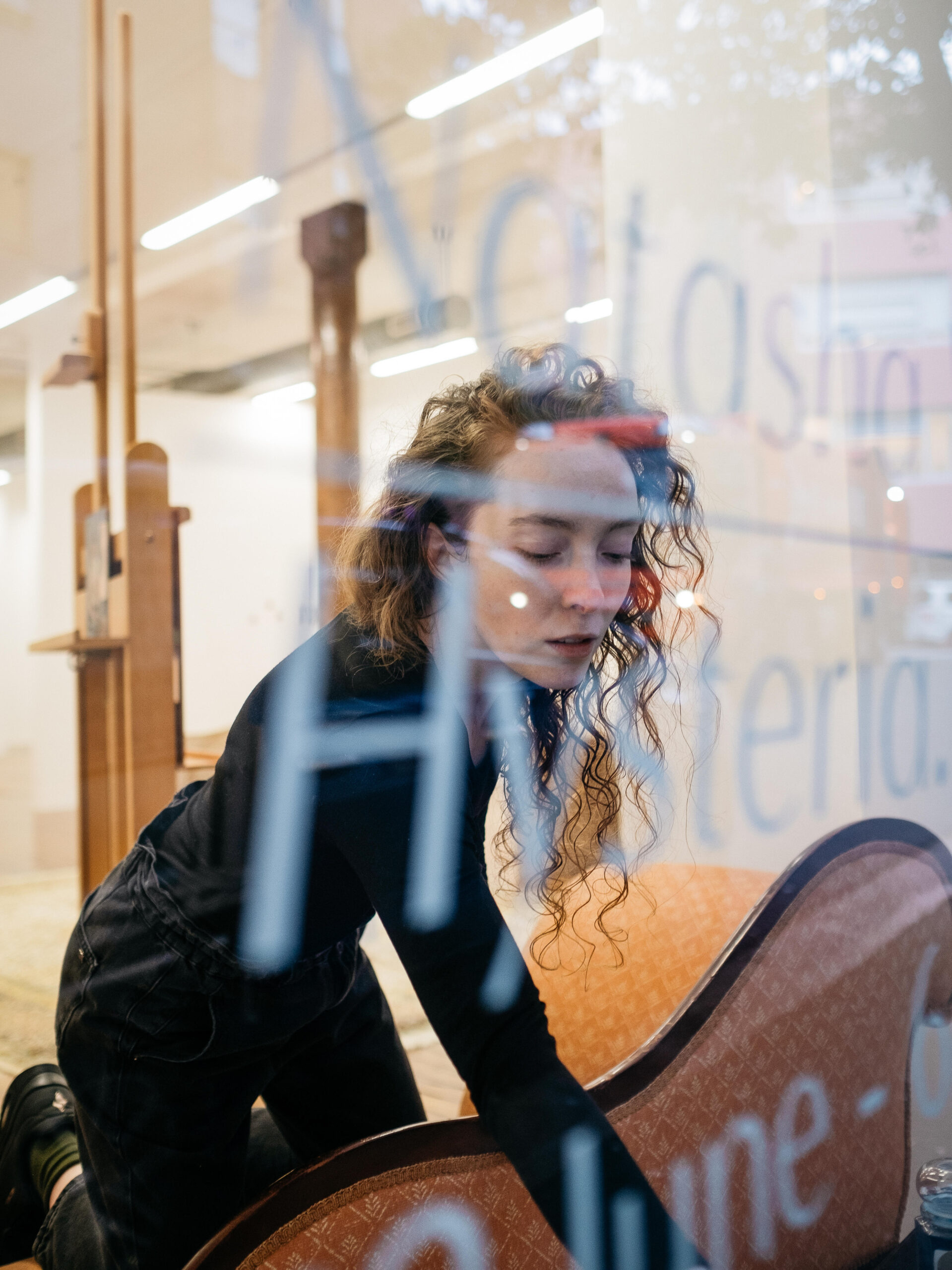
Capturing the full picture
While developing her project over a number of years, Walsh thought of the many female muses depicted throughout art history, asking herself: What would paintings look like if those women were safe and empowered in the painting process rather than sidelined and abused?
She invited major “non-male” Australian creatives, including the singer Montaigne and writer Bri Lee, into her studio to re-imagine major artworks – acting as both sitters and active collaborators.
Across two walls, Walsh had pinned famous canonical deceptions of women, from different artists, styles and time periods. Pink thread wove between the works, linking common ideas.


“In [displaying] a large swathe of how women have been represented in our institutions … I was just showing the one-sided gaze of all these male artists on the female muses,” she says.
“I asked [the sitters], throughout art history, which work would you like to re-imagine because you feel like there’s something lost in the original painting, that you’d like to look at through a different perspective?”
Walsh didn’t want to “cancel” any of the historic artists in this process, as she loved a lot of the paintings. But she wanted to empower audiences to not just be told by institutions what works makes up art history: Instead, she wants them to re-assess the canon through their own eyes.
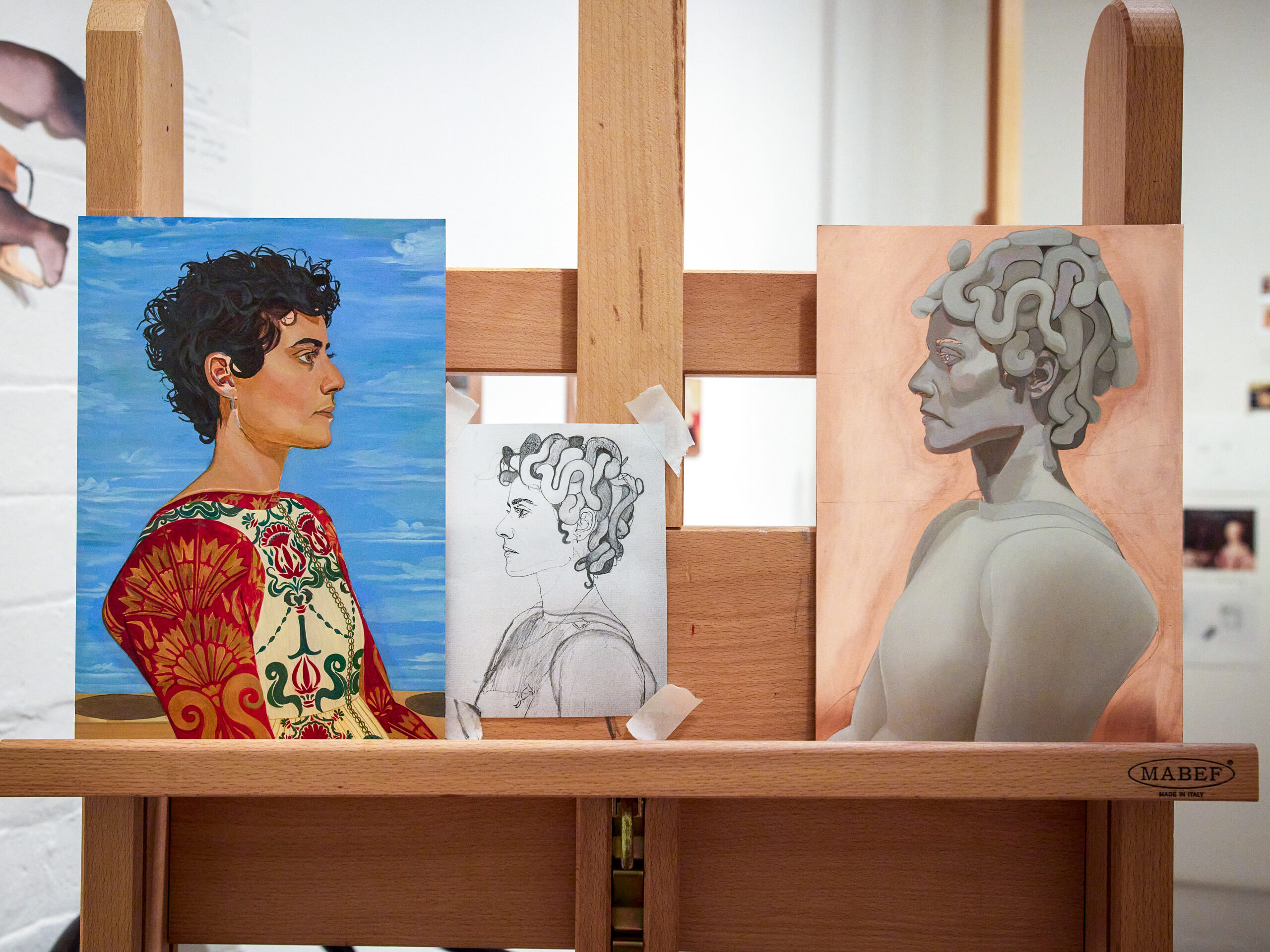
“[I want people to] see that art history is an interconnected web of references. Artworks are in conversation across time, and these conversations were predominantly through the male gaze, and always seem to be an objectification of the female subjects,” she says.
In one of Walsh’s paintings, the artist Atong Atem poses as Matisse’s Yellow Odalisque. Where Matisse whitewashed his muse, painting the Turkish model with European features, Walsh centres Atem’s African heritage.
In the painting that is a finalist in this year’s Archibald Prize, married fashion designers Katie-Louise and Lilian Nicol-Ford re-create Gabrielle d’Estrées and one of her sisters, a 16th-century artwork by an unknown artist, foregrounding the original’s queer undertones.
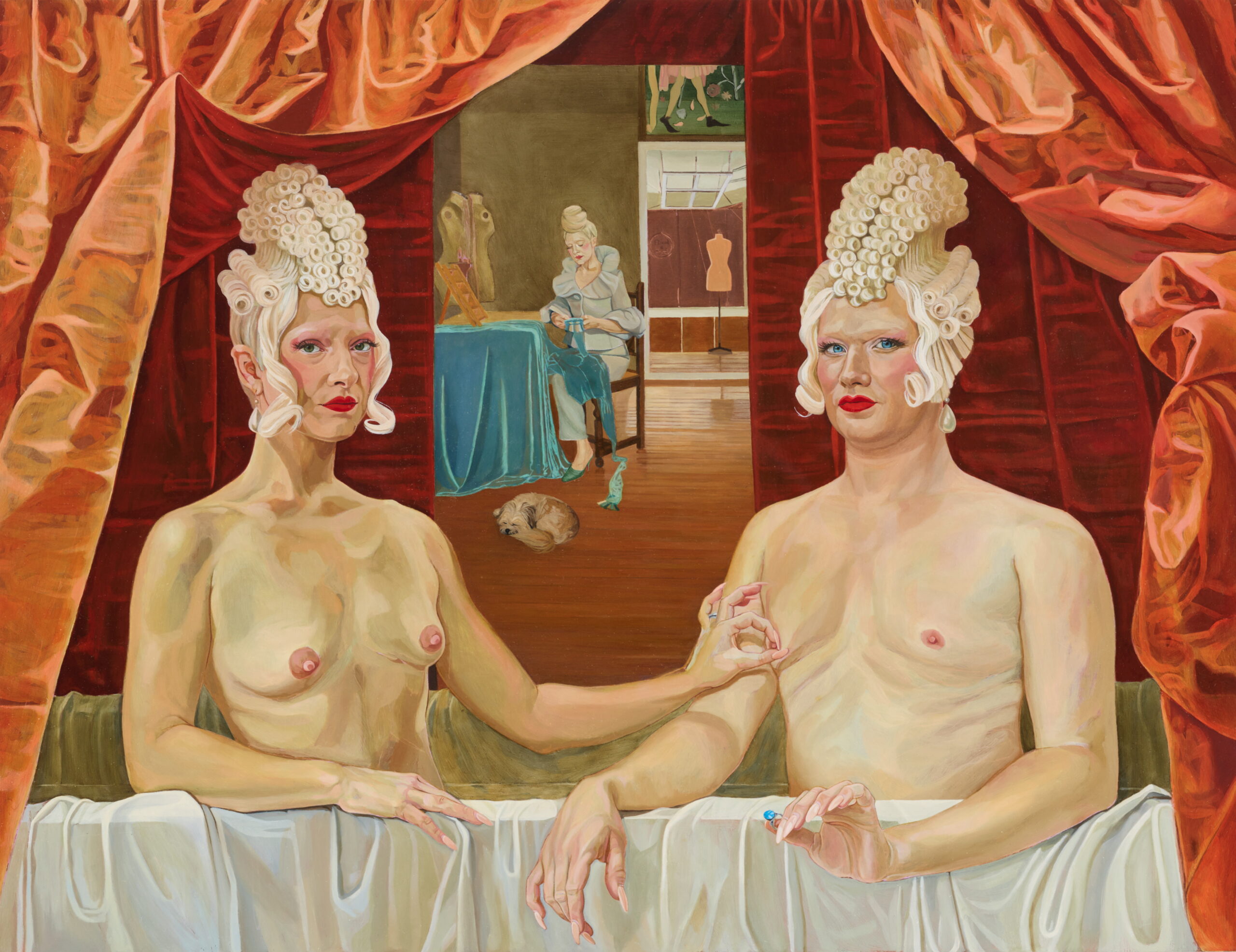
“We have this narrative of the genius working alone, and creating this innovative singular thing,” says Walsh.
“The thing is that as an artist, I know that when you have someone sit for you, it’s a deeply collaborative experience. Those stories [in historic paintings], they don’t capture the full picture.”
Who would take on Picasso?
In her project, Walsh always knew Picasso would be a challenge — as one of the most famous, and infamously misogynistic, painters in art history.
“The fact that he kind of boxes his female subjects into two-dimensional abstractions … the crying woman, the damsel, the witch, the placid nude,” she begins to explain.
“And also with his lovers and muses, like Dora Maar and Françoise Gilot, he was pitting them against each other, because he enjoyed being at the centre … and turning them into caricatures for himself. I just wanted to flesh them out.”

Walsh asked Bri Lee, an author known for her writing about sexism and gender, to go head to head with Picasso.
“He believed ‘there are only two kinds of women: goddesses and doormats’ and so could only ever paint goddesses and doormats. He believed women were ‘machines for suffering’ and so could only ever paint machines,” writes Lee in a companion piece to Walsh’s Hysteria.
“We discussed what felt important to try to capture — both in the process and the result — and decided: He cut them [his female muses] up, so we’ll cut him up!”
So Walsh cut out prints of Picasso’s paintings of women, and together with Lee they assembled their own woman.
“It wasn’t just violence in response to violence. It was taking his wretchedness and turning it into something beautiful and brilliant,” writes Lee.
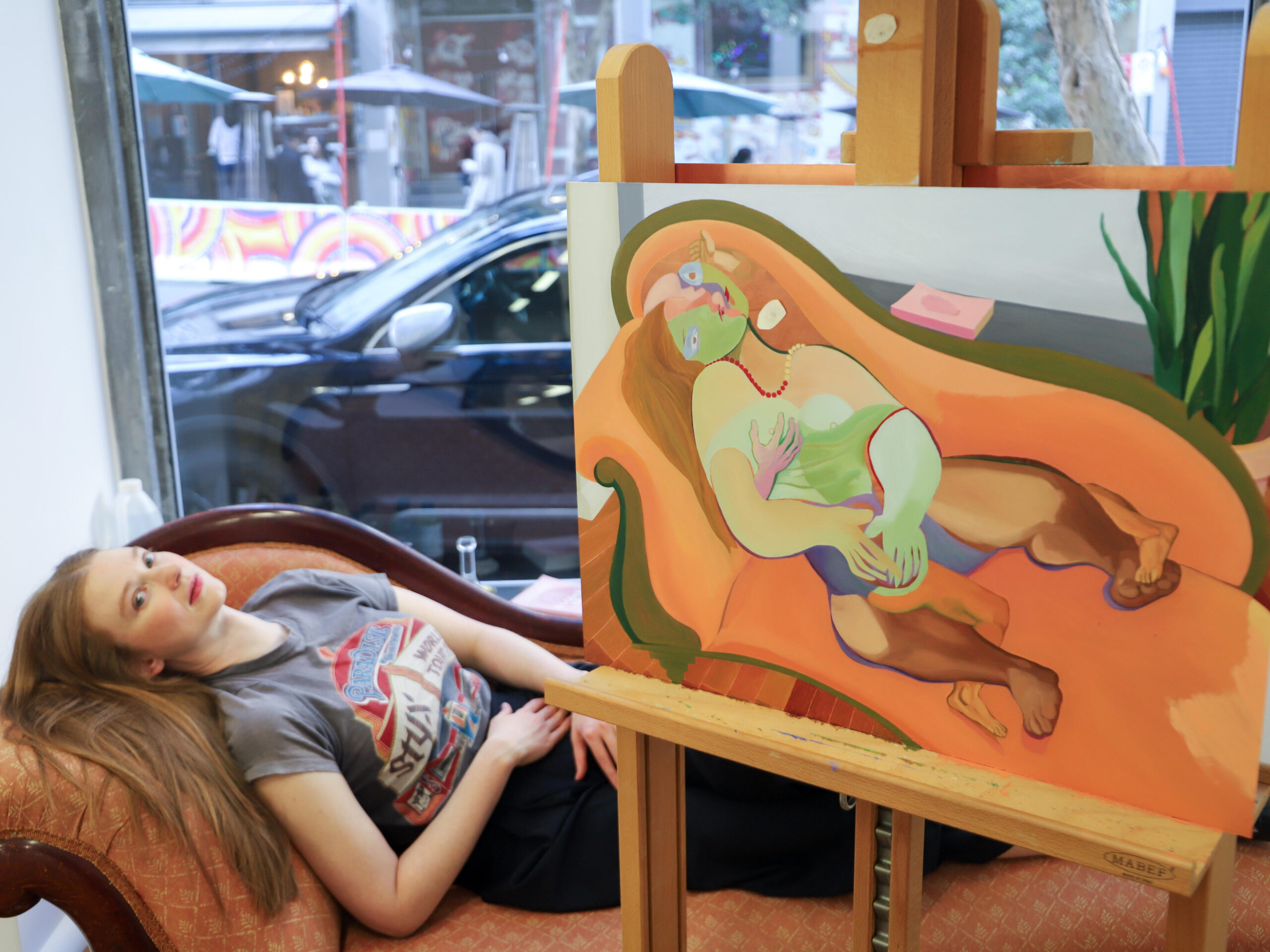
Recently Walsh worked in the window of N.Smith Gallery, painting the final touches on the woman she created with Lee.
Titled Our Nude, Walsh and Lee’s woman has four hands, legs and feet, one head and vagina, but two gazes. And she is masturbating.
As Lee writes: “Something no goddess or doormat or machine would do.”
The Marriage of Nicol and Ford, a finalist in the 2024 Archibald Prize, is showing at the Art Gallery of New South Wales until September 8. Walsh’s Hysteria series is ongoing.



